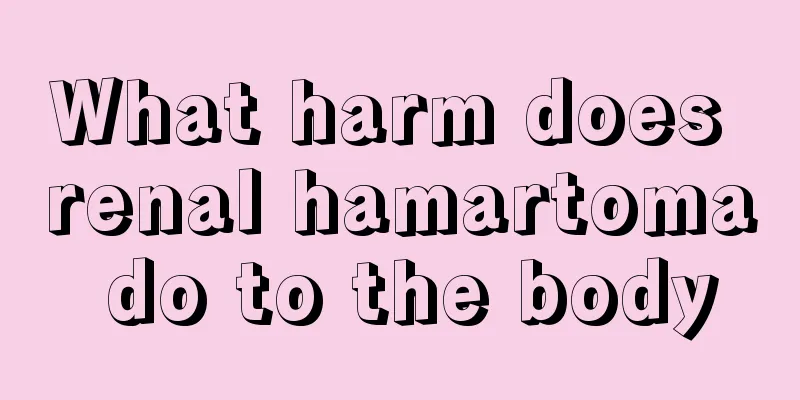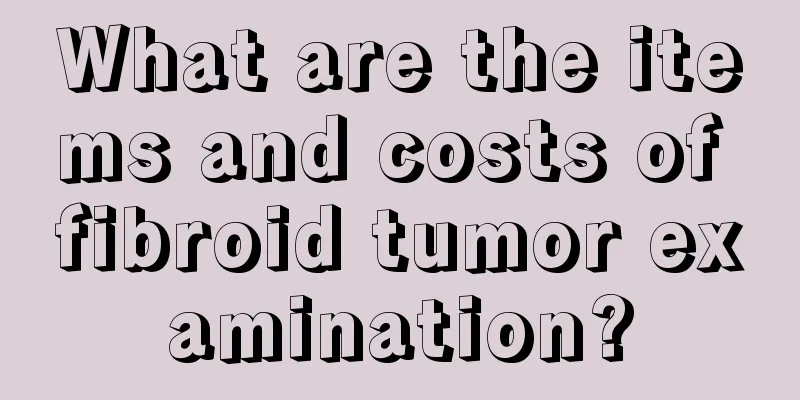What harm does renal hamartoma do to the body

|
Renal hamartoma is a benign tumor that usually does not cause serious harm to the body, but in some cases it may cause bleeding, pain, or pressure on surrounding organs. Treatment options include observation, drug therapy, and surgical removal, depending on the size of the tumor and symptoms. 1. Causes of renal hamartoma The cause of renal hamartoma is not fully understood, but it may be related to genetic, environmental and physiological factors. In terms of genetics, patients with tuberous sclerosis complex are more likely to develop renal hamartoma, which is an autosomal dominant genetic disease. Environmental factors such as long-term exposure to certain chemicals or radiation may increase the risk of disease. In terms of physiological factors, changes in hormone levels may promote tumor growth. Trauma or infection may also induce renal hamartoma, but it is relatively rare. 2. Harm of renal hamartoma Renal hamartomas are usually benign, but they may cause some health problems. Larger tumors may compress the kidneys or surrounding organs, causing abdominal pain, back pain, or urinary tract obstruction. Rupture of the tumor may cause internal bleeding, which manifests as sudden severe pain or blood in the urine. In rare cases, renal hamartomas may become malignant, but the probability is extremely low. For small, asymptomatic tumors, no special treatment is usually required, but regular follow-up is required. 3. Treatment of renal hamartoma Treatment depends on the size of the tumor and the symptoms. For small, asymptomatic tumors, regular imaging tests are recommended to monitor changes. In terms of drug treatment, the use of mTOR inhibitors such as everolimus can inhibit tumor growth and is suitable for patients who cannot undergo surgery. Surgical treatment includes partial nephrectomy, nephrectomy, and embolization. Partial nephrectomy is suitable for patients with large tumors that are confined to the kidneys and can preserve some kidney function. Nephrectomy is suitable for patients with large tumors or those that have invaded surrounding tissues. Embolization shrinks the tumor by blocking its blood supply and is suitable for patients who cannot tolerate surgery. Although most renal hamartomas are benign, appropriate treatment measures should be taken according to the specific situation. Regular follow-up and imaging examinations are the key to managing asymptomatic tumors. For symptomatic or larger tumors, drug therapy or surgical intervention can effectively relieve symptoms and reduce the risk of complications. Patients should communicate closely with their doctors to develop a personalized treatment plan. |
<<: What is the cause of cervical cancer
>>: Is there any Chinese medicine to treat renal hamartoma?
Recommend
What are the fastest ways to remove acne scars?
Anyone who has had acne knows that it is not diff...
What are the Chinese patent medicines for treating ovarian tumors
Traditional Chinese medicine has the effect of cu...
Is there any harm in eating too much mango?
Although mango is a delicious and nutritious frui...
What is the reason for upper abdominal pain
The abdomen is a part of the human body that will...
Does cervical spondylosis affect blood pressure?
Suffering from cervical spondylosis is particular...
What is the normal lactate level?
Lactic acid is a substance that exists in the hum...
What are the treatments for lymphoma
Lymphoma patients may experience fever, abnormal ...
How long is the survival period for lung cancer liver metastasis and brain metastasis?
When lung cancer metastasizes to the liver or bra...
What is the condition of small intestinal wall thickening
The intestine can be said to be the largest organ...
What are the exercise requirements for kidney cancer
Many people have found that once kidney cancer is...
What kind of salt water is good for washing your face?
In order to have healthy and delicate skin, women...
Goji berries and jujube can be soaked in water to drink
Today I went to the supermarket with my best frie...
What should you pay attention to when swimming?
As the quality of life continues to improve, many...
What are the early symptoms of lung cancer? 3 early symptoms of lung cancer
Lung cancer is a serious respiratory disease and ...
What should be checked 42 days after delivery?
Everyone knows that during pregnancy, you should ...









